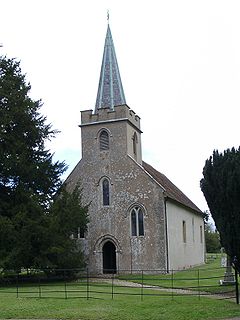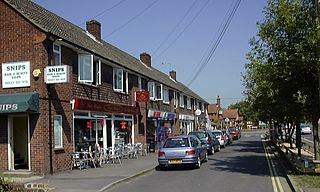
Tadley is a town and civil parish in the English county of Hampshire.
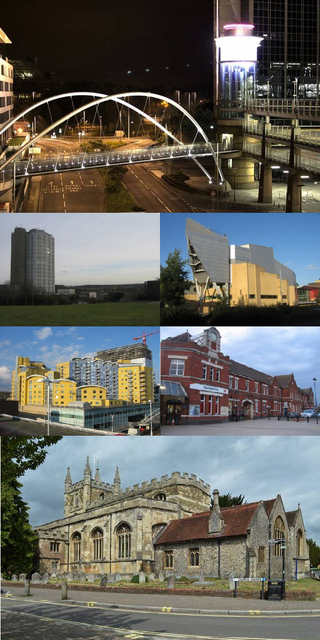
Basingstoke is a town in Hampshire, situated in south-central England across a valley at the source of the River Loddon on the western edge of the North Downs. It is the largest settlement in Hampshire without city status. It is located 30 miles (48 km) north-east of Southampton, 48 miles (77 km) south-west of London, 27 miles (43 km) west of Guildford, 22 miles (35 km) south of Reading and 20 miles (32 km) north-east of the county town and former capital Winchester. According to the 2016 population estimate, the town had a population of 113,776. It is part of the borough of Basingstoke and Deane and part of the parliamentary constituency of Basingstoke.

Freefolk is a village in Hampshire, England. It lies to the west and almost directly alongside the village of Laverstoke; the two villages are separated by the River Test.

Oakley is a village in the borough of Basingstoke and Deane in Hampshire, England, located around 4.5 miles (7 km) west of Basingstoke. In the 2001 Census it had a population of 5,322. Together with the smaller village of Deane, it forms the Oakley and Deane civil parish renamed as Oakley at the 2011 Census.

Overton is a large village and parish in Hampshire, England located west of the town of Basingstoke, and east of Andover and Whitchurch. The village contains smaller hamlets of Southington, Northington, Ashe, Polhampton, and Quidhampton, the latter two lying to the north of the village. The River Test has its source 1 mile (1.6 km) to the east in Ashe.
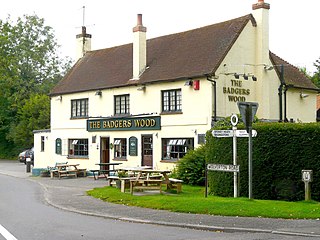
Baughurst is a village and civil parish in Hampshire, England. It is located west of the town of Tadley, 6 miles (9.7 km) north of Basingstoke. In the 2001 census, it had a population of 2,473.

North Waltham is a village and civil parish in the borough of Basingstoke and Deane in Hampshire, England. It is located around 6 miles (9.7 km) southwest of Basingstoke and just north of the M3 motorway. In the 2011 Census it had a population of 870. The village is home to a pond, shop, Victorian primary school, a recreation ground and two pubs: The Fox, and The Wheatsheaf. The Church of England Parish Church is dedicated to St Michael.

Cliddesden is a village and a parish in Hampshire, England located 3 miles south of Basingstoke, close to the M3 motorway. In the 2001 census it had a population of 489, increasing to 497 at the 2011 Census. The land and housing are currently protected as it is within a Conservation Zone and has many areas of beauty and rolling countryside.
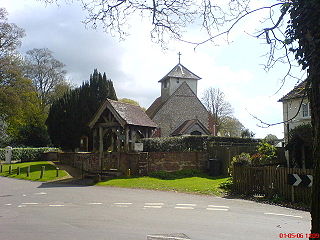
Dummer is a parish and village in Hampshire, England. It is 6 miles south-west of Basingstoke and near Junction 7 on the M3 motorway.

Deane is a village and civil parish in the county of Hampshire, England. Its name appears in the name of the borough in which it is placed, Basingstoke and Deane.

Ashe is a village and former civil parish, now in the parish of Overton, in the Basingstoke and Deane district of Hampshire, England. The River Test commonly rises in the village. In 1931 the parish had a population of 174.

Old Burghclere is part of Burghclere in Hampshire, England, located south of the large town of Newbury near the A34 road. The village of Burghclere, but less so Old Burghclere, was once on the A34 and has now been by-passed, although this section is not really part of the Newbury bypass.

Ashe Warren is a village in the Basingstoke and Deane district of Hampshire, England. The settlement is within the civil parish of Overton, and is located approximately 6.3 miles (10.1 km) west of Basingstoke.
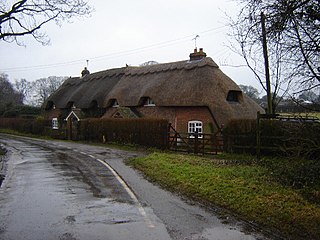
Bradley is a small village and civil parish in the Basingstoke and Deane district of Hampshire, England. Its nearest town is Alton, which lies 5.4 miles (8.7 km) southeast from the village, although Basingstoke lies 6.6 miles (10.6 km) to the north. According to the 2011 census, the village had a population of 202 people. The parish covers an area of 975 acres (395 ha), of which 149 acres (60 ha) is woodland and its highest point is 170 metres (560 ft) above sea level. It contains no hamlets.

Popham is a hamlet and civil parish south of Basingstoke, Hampshire, England. According to the Post Office the population of the 2011 Census was included in the civil parish of Dummer. The area was occupied from pre-historic times and was established as a permanent habitation during the Roman occupation of Britain. The manor of Popham was established by the monastery of Winchester as an outlying agricultural grain station. A small church and school were later established, but have long since disappeared. The parish and hamlet were later dissected by the M3 Motorway and A303 trunk road. Although named for Popham, Popham Airfield and the Popham Little Chef restaurant are situated in the neighbouring parish of Steventon.

Edward Austen Knight was the third eldest brother of Jane Austen, and provided her with the use of a cottage in Chawton where she lived for the last years of her life. He was also High Sheriff of Kent in 1801.

Oakley Hall is a Georgian manor in Oakley, Hampshire, located 10 km (6.2 mi) to the west of Basingstoke. Completed in 1795 by Wither Bramston, the building is now a hotel and conference centre. It is located in a wooded park intersected by the former South Western railway.
Anne Brydges Lefroy (1747/8–1804) was an English writer. She wrote both prose and verse, some of which was published anonymously in her lifetime. Four years after Lefroy died, her friend Jane Austen wrote a poem lamenting her death.
George Austen was a cleric of the Church of England, rector of Deane and Steventon in Hampshire. He is known as the father of Jane Austen.
